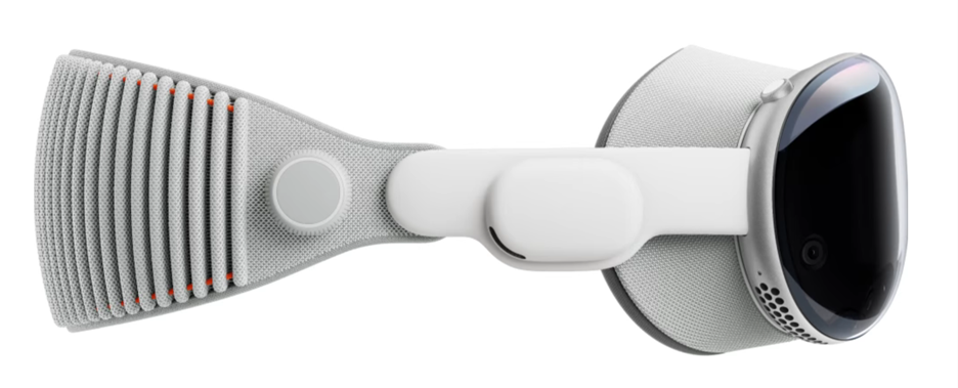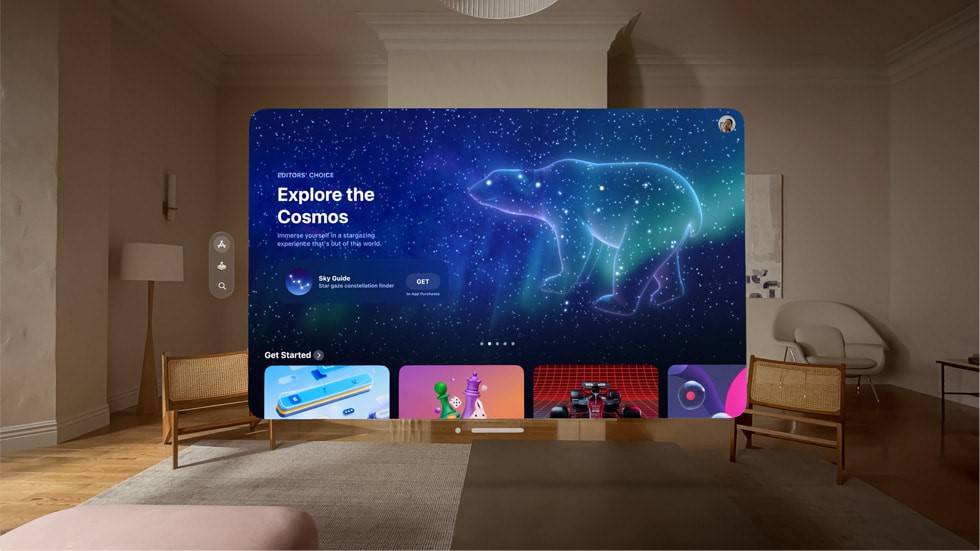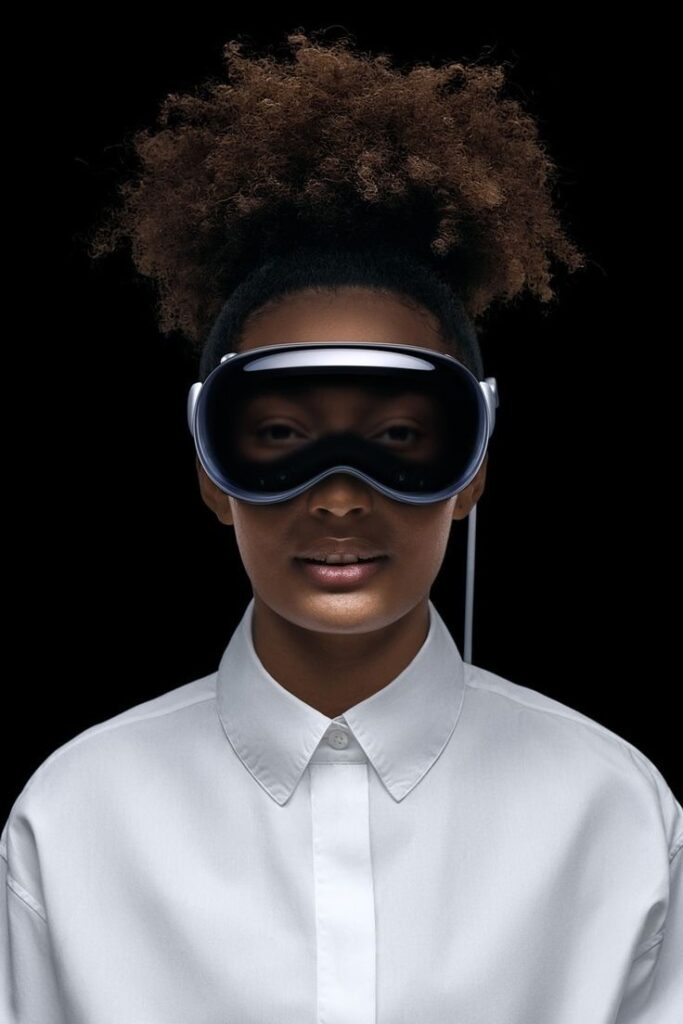Apple has officially unveiled its highly anticipated Apple Vision Pro, marking a groundbreaking entry into the realm of spatial computing. This cutting-edge device seamlessly integrates digital content with the physical world, offering users a unique and immersive experience like never before. Scheduled for release on February 2nd, the Apple Vision Pro is set to redefine how we interact with technology.
The Apple Vision Pro introduces users to the era of spatial computing, allowing them to navigate effortlessly using their eyes, hands, and voice. The device aims to transform the way we engage with digital content, offering an infinite canvas for apps and a personalized workspace. The guided tour offers a detailed exploration of the capabilities and features of the Apple Vision Pro, showcasing its potential to revolutionize user interaction.
The device features an impressive array of technological advancements, including a high-resolution custom micro-OLED display system with 23 million pixels, delivering stunning resolution and colors. The spatial audio system, featuring dual-driver audio pods, ensures a rich audio experience while keeping users aware of their surroundings. Advanced eye-tracking technology, a sophisticated sensor array, and a revolutionary dual-chip design contribute to creating an unparalleled spatial computing experience.
Users interested in exploring spatial computing can pre-order the Apple Vision Pro, securing their place at the forefront of this technological revolution. With a release date set for February 2nd, users can anticipate a device that blends seamlessly with their physical space, unlocking new possibilities for productivity and entertainment.
Explore Apple Vision Pro Features

Apps
Freeing your desktop, Apple Vision Pro allows users to arrange apps anywhere, creating an infinite canvas for their workspace. Whether browsing the web in Safari, jotting down notes in the Notes app, or engaging in conversations in Messages, users can seamlessly transition between tasks with just a glance.
Entertainment
Transform any room into a personal theater with Apple Vision Pro. The device enhances the viewing experience, expanding movies, shows, and games to the perfect size. Spatial Audio adds a new dimension to entertainment, making users feel like they are part of the action.
Photos and Videos
Capture magical moments in 3D with Apple Vision Pro’s first-of-its-kind 3D camera. Relive memories with immersive Spatial Audio and experience existing photos and videos at a remarkable scale. The device also allows users to create spatial videos with the iPhone 15 Pro and view them on Apple Vision Pro.
Connection
Make meetings more meaningful with Apple Vision Pro, facilitating collaboration and connection. FaceTime video tiles are life-sized, and the call expands in the user’s room as new participants join. The device supports app collaboration within FaceTime, enhancing the overall meeting experience.
Design
Designed by Apple, the Vision Pro reflects decades of experience in crafting high-performance, mobile, and wearable devices. Its sleek design incorporates three-dimensionally formed laminated glass, a light seal for a precise fit, and comfortable headbands for a personalized fit. The external battery supports up to 2 hours of general use and up to 2.5 hours of video playback.
visionOS
Apple introduces its first spatial operating system, visionOS, built on the foundations of macOS, iOS, and iPadOS. The operating system enables powerful spatial experiences, allowing users to control Apple Vision Pro with their eyes, hands, and voice. Apps in visionOS fill the space around users, reacting to lighting conditions and casting shadows.
Technology
Apple Vision Pro pushes boundaries with groundbreaking technology, including a custom micro-OLED display system, advanced Spatial Audio, responsive eye tracking, a sophisticated sensor array, and a unique dual-chip design featuring custom Apple silicon. The device promises an unparalleled spatial computing experience that must be seen to be believed.
Privacy and Security
Privacy and security are paramount with the Apple Vision Pro. The device incorporates Optic ID, a secure authentication system that utilizes the uniqueness of the user’s iris. Like every Apple product, Vision Pro is designed to prioritize user privacy and data security.
Developer Platform
Apple Vision Pro opens up an all-new world for developers, providing endless possibilities for creating spatial experiences. With familiar tools and frameworks like Xcode, SwiftUI, RealityKit, and ARKit, developers can leverage their creativity to build unique and immersive applications.

Display Brightness and Color Gamut
The detailed review by The Verge highlights the intricacies of the Apple Vision Pro’s display. The device dynamically adjusts brightness based on the user’s environment, striving to balance out the brightness of the real and virtual worlds. However, in scenarios like a medium-lit room with a dark virtual environment and a bright window, users might observe fluctuations in display brightness. Additionally, the Vision Pro supports 92 percent of the DCI-P3 color gamut, showcasing 49 percent of the colors perceptible to the human eye.
It is important to emphasize that despite the impressive video passthrough capabilities, the display has limitations. The field of view is not expansive, and the inherent nature of looking through lenses makes it feel even smaller. Users may encounter distortion, vignetting, and color fringing around the edges, especially in bright environments. The author notes that these issues are not deal-breakers but raises concerns considering the device’s premium price point.eo Passthrough Realism
The video passthrough of the Vision Pro is considered the best in the industry, providing a convincing blend of virtual and real worlds. However, the article emphasizes that users are consistently reminded they’re viewing screens, with motion blur and other camera and display limitations. The article underlines that while it is a remarkable achievement, the realism is not perfect, and the experience is a constant reminder that you are looking at a video on screen.
Apple takes pride in the eye and hand-tracking system of the Vision Pro, which is described as superior to other consumer systems. The system allows users to control the device by looking at and tapping on elements. The initial experience is described as awe-inspiring, feeling like a superpower. However, the article points out that over time, it becomes less magical and can even make using the Vision Pro harder. The need to look at what you want to control is considered distracting, particularly when compared to traditional input methods on other computing devices.
The article critiques the direct link between the user’s gaze and the input system, highlighting that it is not conducive to multitasking. Unlike traditional computers, where users can click on controls while focusing on other tasks, the Vision Pro requires constant attention on the target for effective interaction.
Apple’s 3D persona system is briefly mentioned, describing it as “really impressive and also really bad.” The review suggests watching the video for a better understanding of this system, which captures users’ reactions in an uncanny yet captivating way.

Apple Vision Pro promises to usher in a new era of computing, with spatial experiences that defy traditional boundaries. While users anticipate its official release on February 2nd, the device represents a compelling leap forward in the intersection of technology and the physical world.
Nevertheless, the Vision Pro stands out as an astonishing product, a first-generation device that only Apple could produce, tackling complex engineering challenges with an impressive display, seamless integration into the Apple ecosystem, and a level of execution few companies can achieve in a first iteration. However, amid its technological marvels, it inadvertently highlights potential dead ends, suggesting that certain core ideas, such as camera-based mixed reality pass through, might face limitations.
The Vision Pro is considered the best video passthrough headset and boasts unparalleled hand- and eye-tracking capabilities, yet it raises questions about the continued dominance of traditional input methods like the mouse, keyboard, and touchscreen. While the device feels like magic when it works, it also exposes frustrations when it falls short. This raises speculation about whether Apple acknowledges these limitations and views the Vision Pro as a precursor—a simulator or a developer kit paving the way for the imagined hardware of true optical AR glasses.
Despite the promises for the future, the review emphasizes the importance of assessing the product as it stands today, with the user-facing notable trade-offs. These include practical considerations like the device’s impact on personal appearance, limitations in sharing experiences, the absence of HDMI inputs, and difficulties in showcasing the content to others. Furthermore, the inherent isolating nature of headsets, as pointed out by Tim Cook, is seen as a significant drawback for a primary computing device.
Ultimately, the review expresses a preference for computing devices that encourage collaboration and shared experiences, expressing a desire to work alongside others rather than being immersed in the solitary world of Vision Pro. As the review concludes, it leaves the reader with a series of poignant questions, emphasizing the substantial trade-offs involved in adopting the Vision Pro as a primary computing device.
Sources
- https://www.apple.com/apple-vision-pro/
- https://www.theverge.com/24054862/apple-vision-pro-review-vr-ar-headset-features-price
- https://www.theverge.com/24055677/apple-vision-pro-epic-netflix-app-ecosystem-monopoly
- https://www.gsmarena.com/insider_claims_that_apple_sold_200000_vision_pro_headsets_in_10_days-news-61400.php




